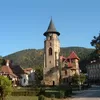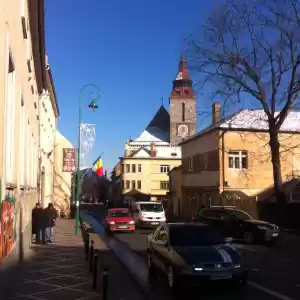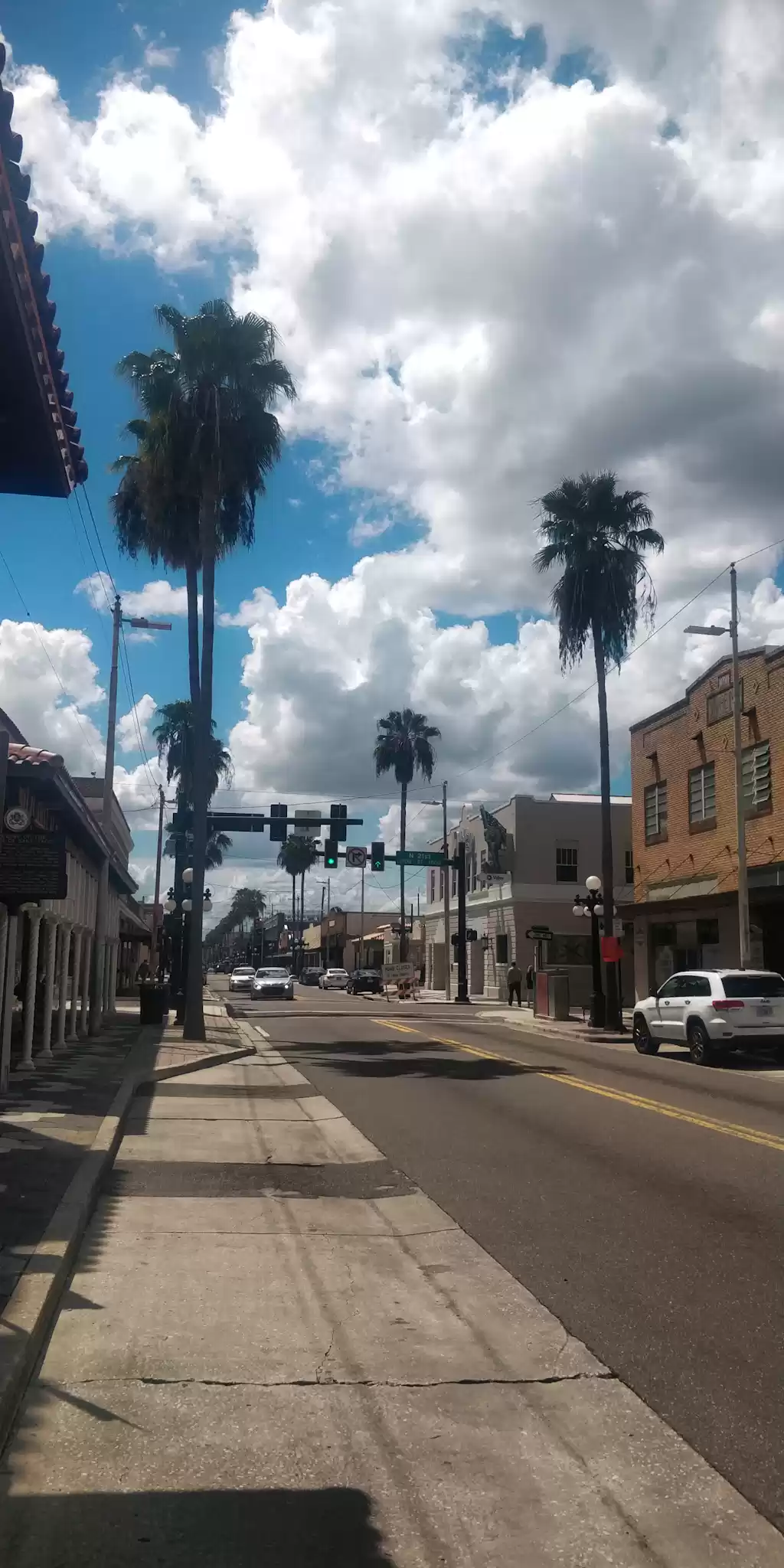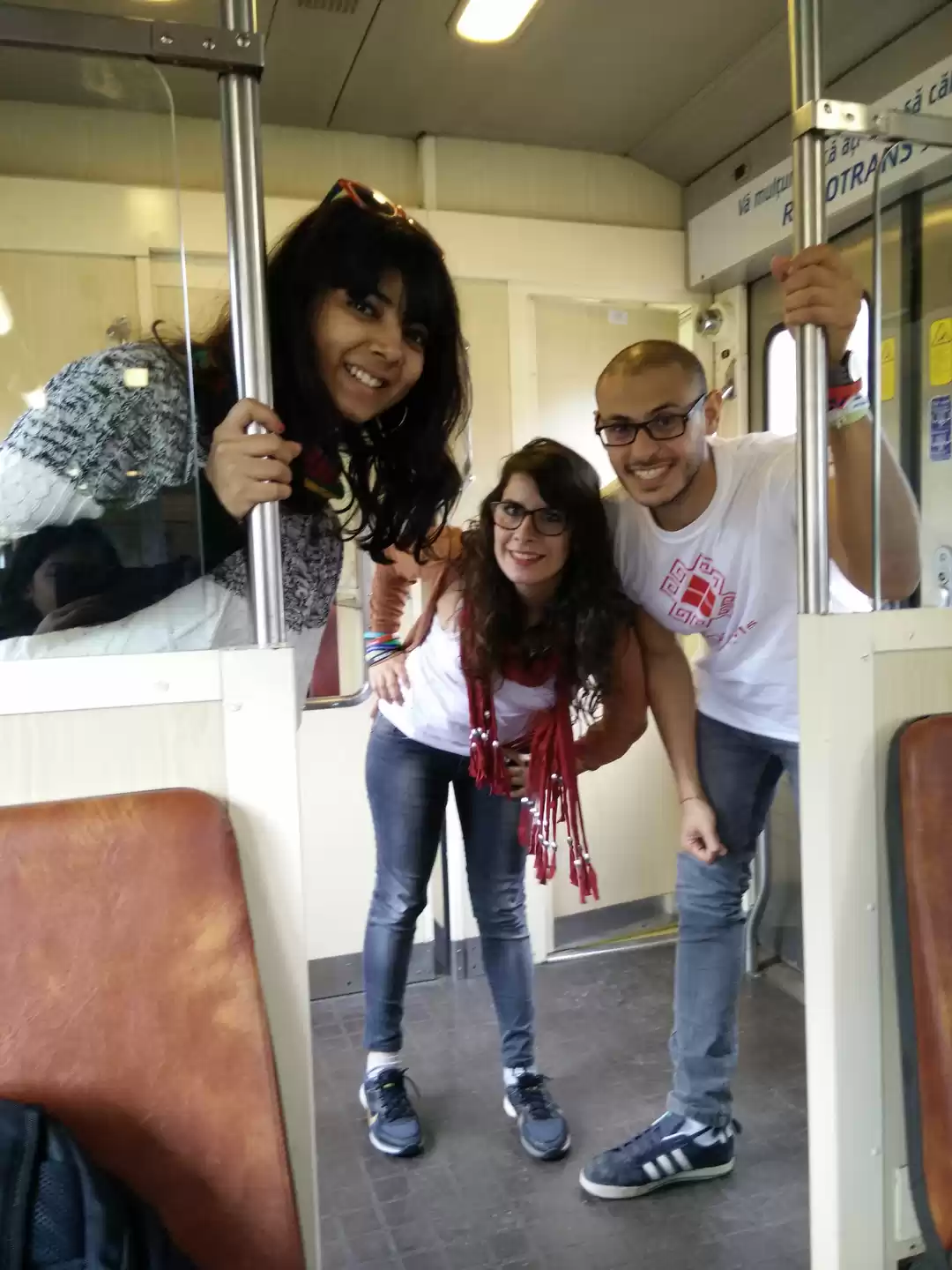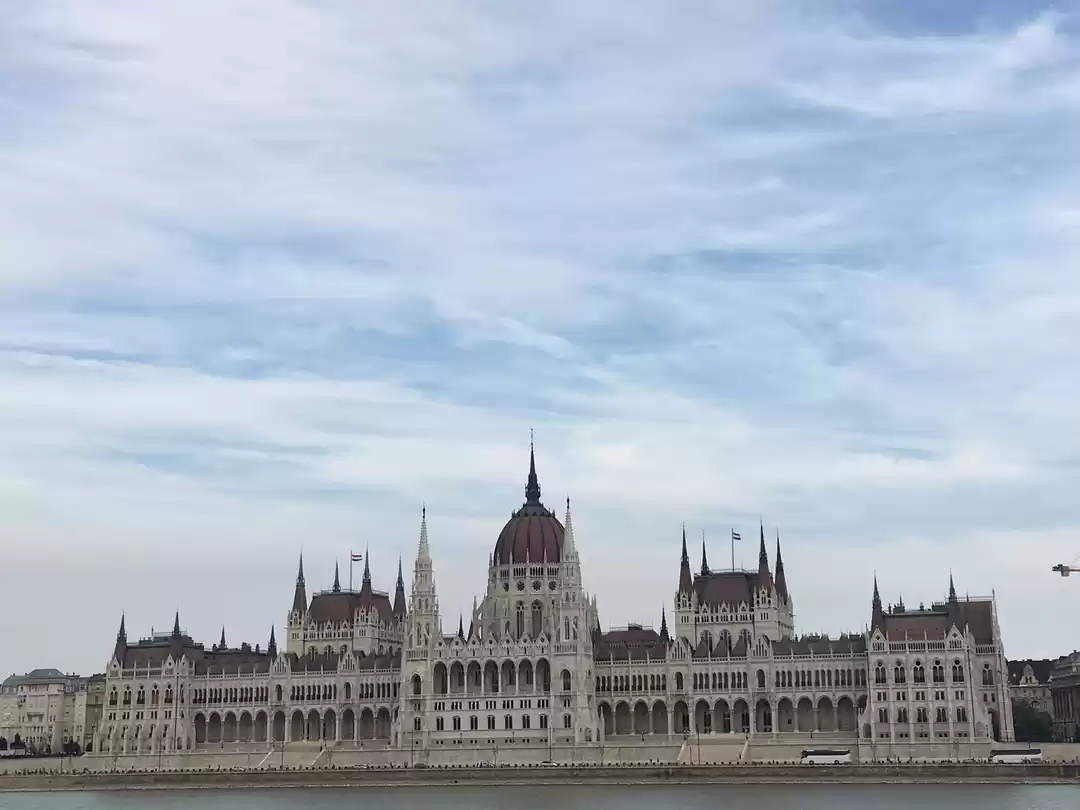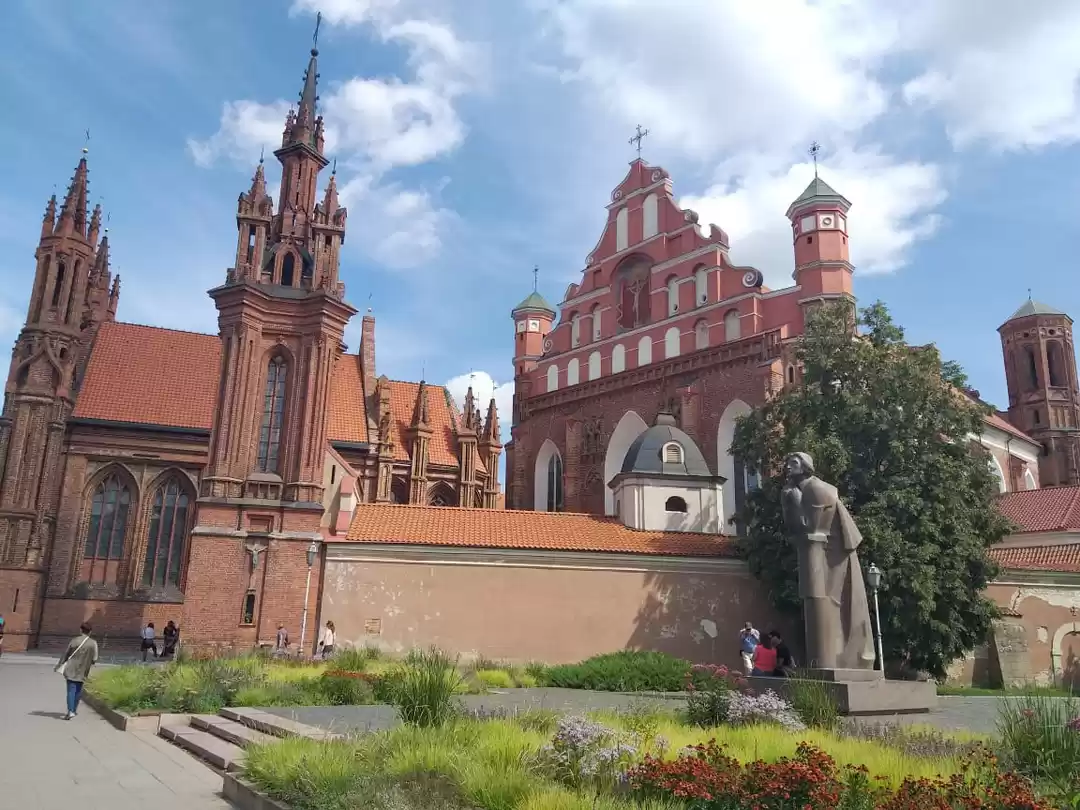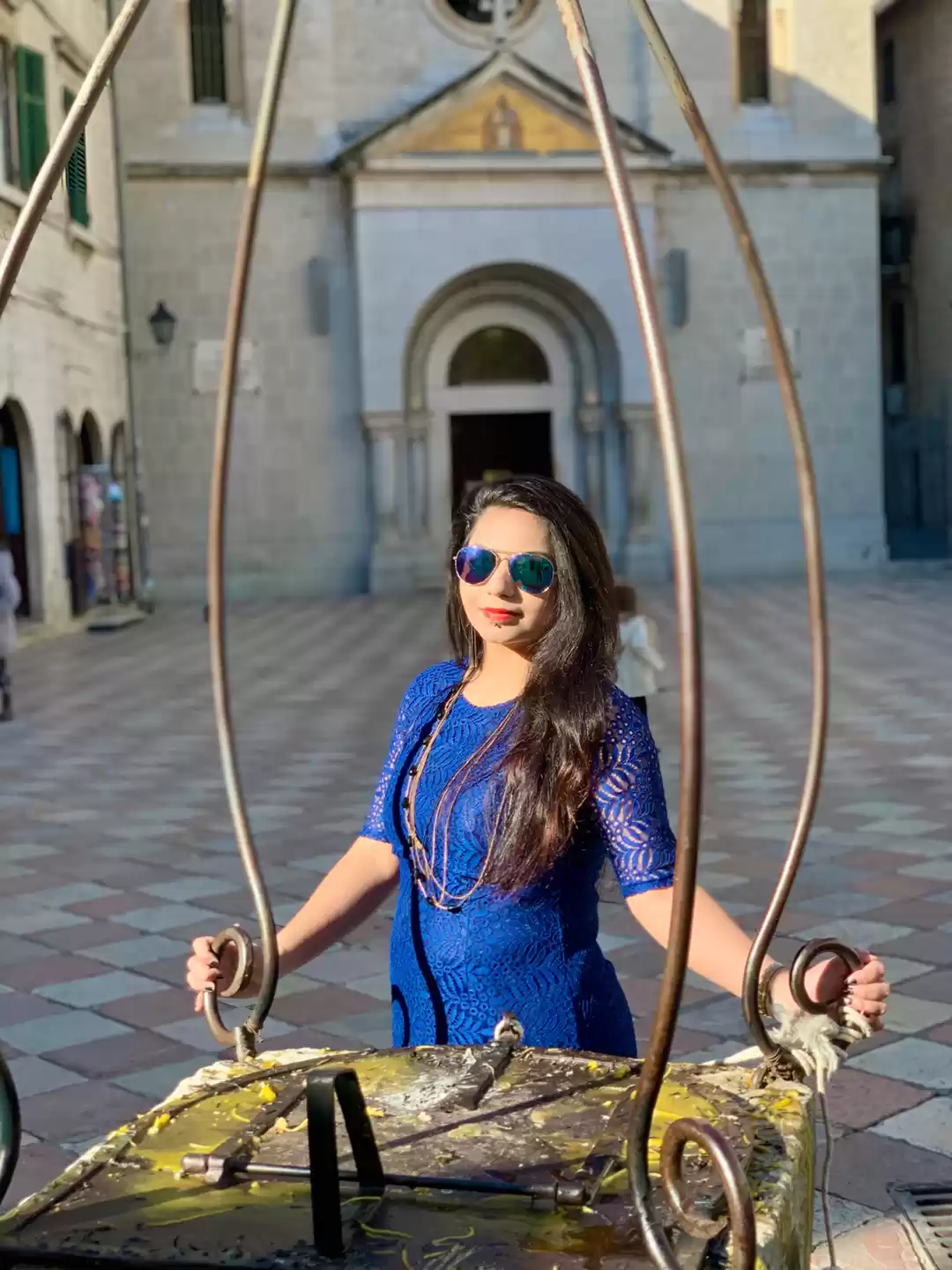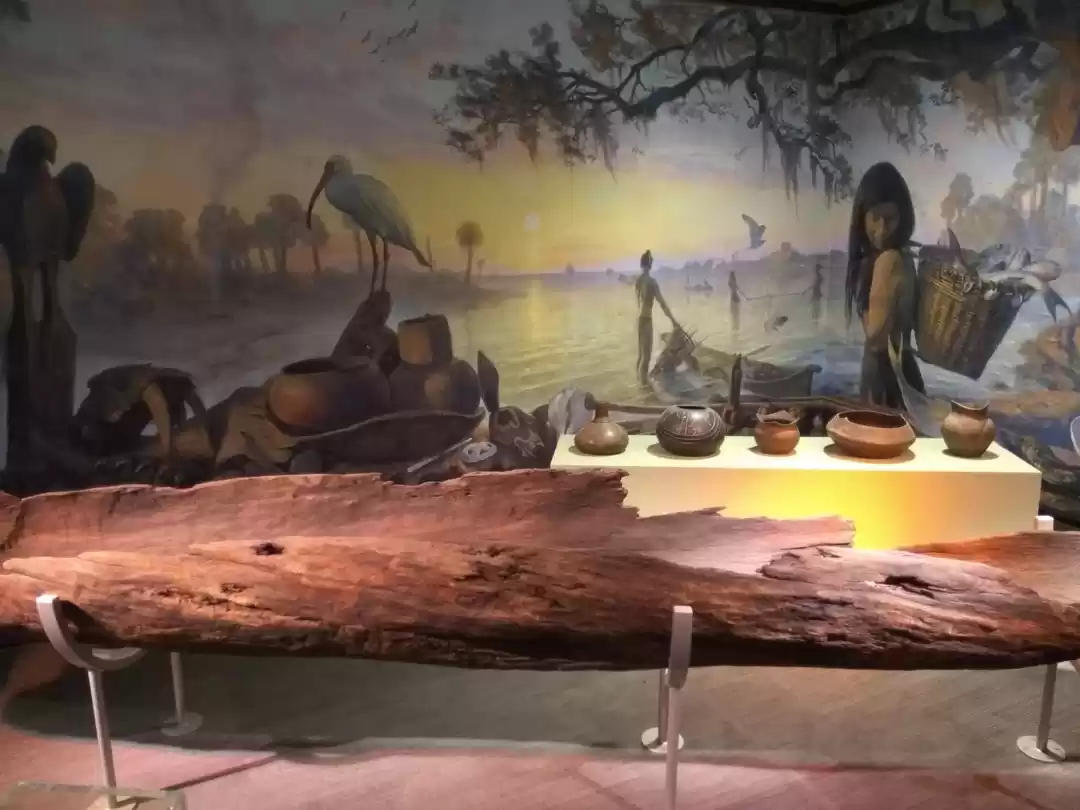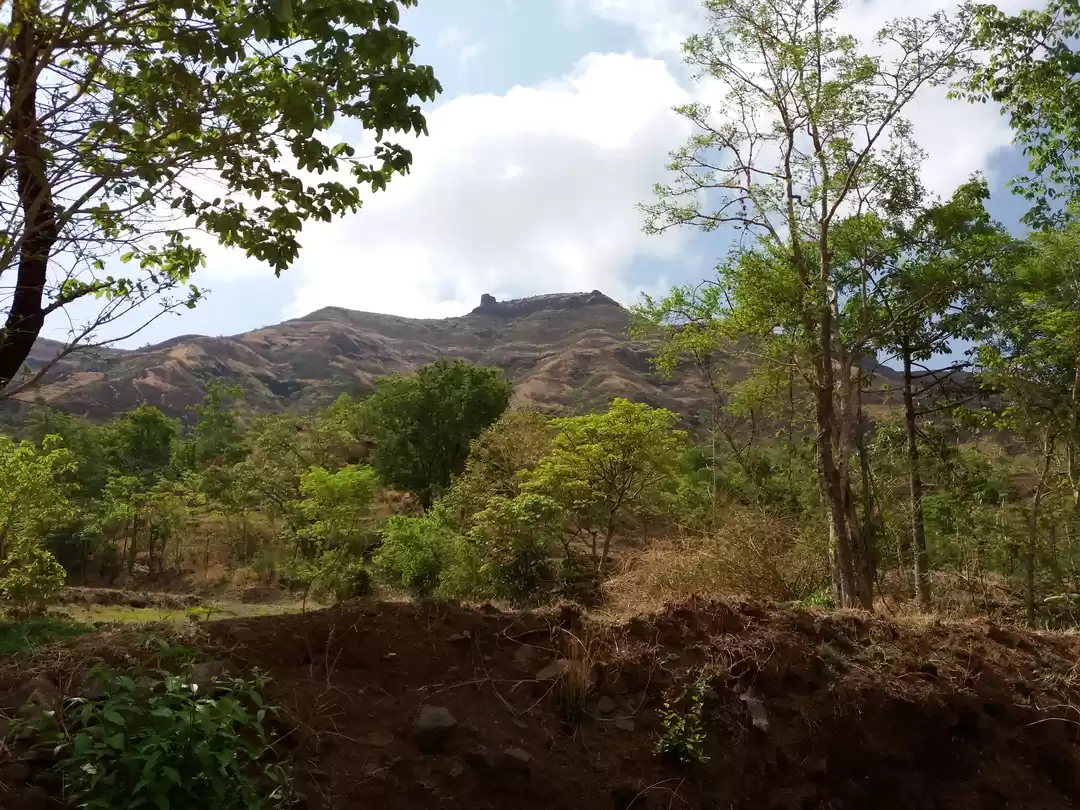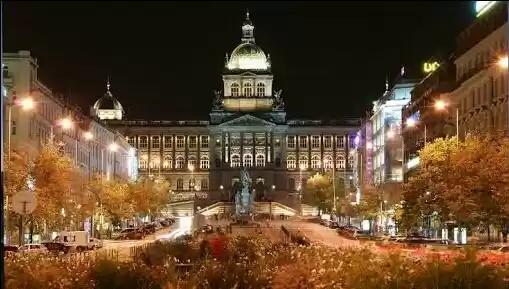
For me it was important to get to Brasov in a minivacation, because although for others it may seem trivial and nothing out of the ordinary, I had for a long time the city on my list. Brasov for me was a dream city, and I wanted to visit it for a long time. My husband wasn't so exited about this city, because over the years he was there a lot for business reasons. So, after talking to him about how much i want to visit Brasov, we decided to go away for a weekend. We rented a car from a rent a car company in Bucharest, and we drove to Brasov on a very sunny day.
About Braşov I will not tell you anything historically and geographically, because everyone knows what this is all about, and if they are still curious they can find a lot of details online.
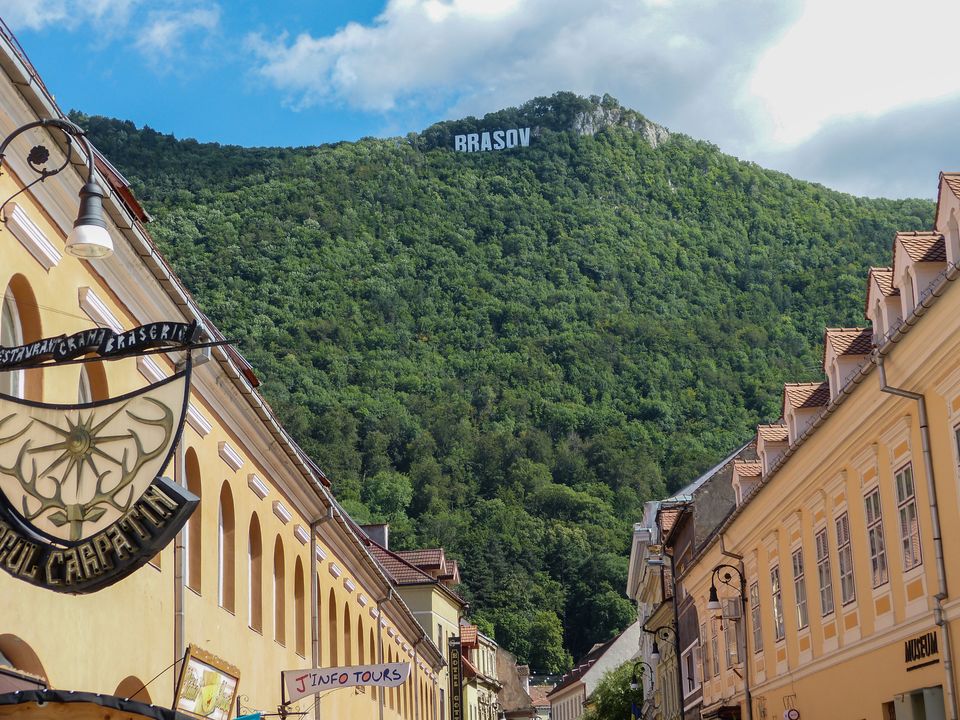
One of Romania's largest cities is also one of the most touristy places in the country. Brasov has a lot of amazing things to show to anybody who comes to visit, especially foreigners. I was very pleased to see old tourists from many corners of the world: English, Americans, Germans, French, Russians, Czechs, Greeks, Asians in large groups with a guide, or in smaller groups. Because you can find a lot of good and beautiful stuff written about Brasov, I will only tell you about our experience, in the idea that maybe there might be others in our situation interested in approaching the city like we did.
What we did in Brasov - Friday
We arrived in Brasov on a Friday afternoon before lunch, and we checked-in as we arrived without waiting, thanks to our very good hosts at Hotel Jasmine. We then walked to the center of the city with the small pocket map we found in the hotel room. After a half-hour journey through smaller streets, larger boulevards, we reached the remarkable edifice of the city hall and from there, we launched on the famous Republic street, an exclusive pedestrian street that brought us to the well-known Council Square. On the Republic Street there was a crowd of tourists, mostly foreigners, who admired the old buildings, built in the specific baroque style, others enjoying the mild weather on the terraces placed on the central axis of the artery.
The Square of the Council, broad and quite crowded, is rightly considered the heart of Braşov, from where it vibrates the animated life of the city, being often a scene in the open air. A number of old buildings that now host cafes, famous restaurants or all sorts of banks and other institutions border the market on all sides, and in the middle the Town Hall of the Council, today the County History Museum of Brasov.

In the past, the market was the place where many Romanian merchants, Saxons, Hungarians or Turks exhibited their merchandise, who were attracted by the status of the main trading node that Brasov had since the mid-1300s. Later, a building was made in which the city council meetings were held and those for the "division of justice", which would become the House of the Council and the Town Hall, and from that moment on, the city's large market, specific to the Saxon cities, took the name of the main building which it hosts.
However, what we wanted to see specifically was the Black Church, rightly another symbol of Brasov, at the same time a symbol of the Transylvanian Gothic. The Black Church has been in the process of restoration for many years, perhaps for that reason I have not even found it open. Reality confirms that it is impressive in size and appearance, impressing any willing tourist to stop and look at it more closely. Although its edification began as early as 1383 as the Church of St. Maria, the name under which it was known afterwards was taken from the great fire of 1689 which blackened its walls, and after which its interior was rebuilt in Baroque style, although it is recognized as the symbol of the Transylvanian Gothic. I read that it is the largest sacral structure in the country and the largest medieval church between Vienna (dome Saint Stephen) and Istanbul (Hagia Sofia).

Walking slowly on the alley Dupa Ziduri, along the running water, we were going to climb both the Black Tower in the immediate vicinity and the White one, a little further down, going on the Royal Promenade, set up by over a hundred years as a connection between them to offer a beautiful view of the City of Brasov. In addition, I saw from above the Graft bastion, built as a fortified bridge in front of the White Tower, which made the connection between it and the city. If the White Tower had been assigned, after its construction in the second half of the fifteenth century, for the defense of the Trustee and Arms Guild, the Black Tower had the dual function of both defense and observation, being an independent building, older by a century compared to the first one. Like the Black Church, the Black Tower was named so because of the same fire in 1689. These two towers do not resemble each other, while the White one is semicircular, the Black Tower has a parallelepipedal shape. Although I understood that both would host museums, I did not find any of them open.

With the map in my hands, seeing that they were in the area, we still wanted to reach the two gates: the Catherine Gate and the Șchei Gate, as well as the famous Sforii Street. The first time we saw the Catherine Gate, a square-plan construction, with the roof of four towers expressing the supreme authority of the jurisdiction over the city's inhabitants. Built in 1559 or even in 1540, it was for centuries the only gate that pierced the western walls of the city and is the most beautiful gate that has retained its original appearance until today. We also admired it, we walked under its arcade, then headed for the other gate in the neighborhood, the Șchei Gate. This is a younger gate, since 1827, being built in order to decongest the increased traffic in this area. It has the shape of a triumphal arc with three entrances, one main, larger, in the middle for the cars to pass, and two lower left and right intakes for pedestrians. The Latin inscription on it tells us this gate was built after the visit of Emperor Francis I to Brasov in 1817.

On our way to Sforii Street, we passed past Sinogoga Beth Israel, which was built in 1901, which I photographed through the fence, being closed. Then, at a short distance, I found what I was looking for, an indicator showing us that Sforii Street was on the right. Considered to be the narrowest street in Eastern Europe and the third narrowest in Europe, it is actually a corridor linking the streets of Cerbului and the Șchei Gate. Its existence is attested in the documents of the 17th century and it is said that the firefighters were passing by in the past to make it easier to Şchei in case of fires. It has a width that varies between just 111 and 135 centimeters and a length of 80 meters. Thousands of tourists come to see Sforii Street, attracted by the surrounding architecture or pure curiosity. The fact is that it has become another symbol of Brasov, one of the most photographed places and one of the favorite places for selfies. Sforii Street has a legend for those who are in love. It is said that during the medieval period there were couples who came here to kiss in privacy, but also young lovers whose parents did not agree with their relationship. The legend that has lasted for years tells that young lovers who kiss on Sforii Street are destined to stay together for life. Last year, Sforii Street was reinvented as a street art gallery where the paintings were the painted frames of the 27 windows that go to the street. Young artists from Brasov have made murals, and the inhabitants of neighboring buildings have had the task of maintaining the facades.
Saturday, the next day
I read on a small map a recommendation that had gone to my heart and did not give me peace: "do not leave Brasov until you see it from the top of the Belvedere Tâmpa platform”. The view that you have on the city and the surroundings makes it worth the money. If you go on foot, our recommendation is to climb Gabony's steps (the yellow triangle path) and descend on the Serpentine Road (the red triangle path).

Brasov is at an average altitude of 625 m, guarded by several famous hills: Hill of the Citadel, Straja (Warthe), but the mountain that is remarkable, is Tampa, with a height of 960 m, at the foot of which stretches the city. That meant choosing a 335 meter climbing route, and we agreed to follow the advice on the map, even though we read that Gabony's Steps is the most difficult route of the four, while the Serpentine Road is suitable for light hikes, being the easiest route among the four described by the pocket guide.
As we finished our breakfast, we took the road to the city center, then headed for the Tampa Promenade from which we started the trails to the tip of Tampa, pointing to the last indicator that showed us where to take on Gabony's Steps. This route is the most difficult but also the most spectacular, considered to be within an hour and a half. It is named after the name of a Hungarian philanthropist who donated a lot of money to the city. It was best to approach this route coming from Dobrogeanu-Gherea Street, past the Post Office Bastion, but it was not that bad.
The path through the wood did not seem bad at all, but the stairs (167 in total) were no longer easy to walk, even if they were intermingled with a flatter path. We also saw Alesius stone bank, and the stone plate that mentions Gabony, and a few view points arranged with table and benches, from where the sight of Brasov, the surrounding mountains: Perşani, Baraolt, was superb. From place to place, we met panels informing us about the flora and fauna in the area, and about the height we are at.
Upstairs, we saw the cable car building and the Panoramic restaurant. That's where we cooled down with a beer mug. Back, we set off on the Serpentine Road, the red triangle trail, a 3-kilometer-long, very sinuous path with about 25 serpentines. The route is considered as easy, it can be traveled in an hour. Indeed, its difficulty is low, on this path we met mostly tourists, both in descent and climbing, of all ages.
Downstairs, we went back to the hotel for lunch. Late afternoon, we returned to the city to walk on the Brediceanu Alley, along which I reviewed the fortifications of Brasov consisting of the defensive walls, the Weavers 'Bastion, the Funeral Tower, the Hunters' Tower, the Tower of the Woods, the Post Office Bastion. Finally, we chose for the evening walk the Council Square again, animated by the crowd of tourists and locals.
After lunch we were going back home, but we did not want to leave Brasov until we went up to Citadel Hill to see Cetatuia. Cetatuia was not open for sightseeing, but we wanted to admire the area, especially as the weather was so nice. Immediately after breakfast, we took the way back to the center. We walked beside beautiful houses, lovely villas, old buildings, until we met the fortress. We photographed it from all angles. Then, coming down to the center, we told ourselves we should go to the Republic Street and then to the Council Square again, because we still had some time until checkout.

